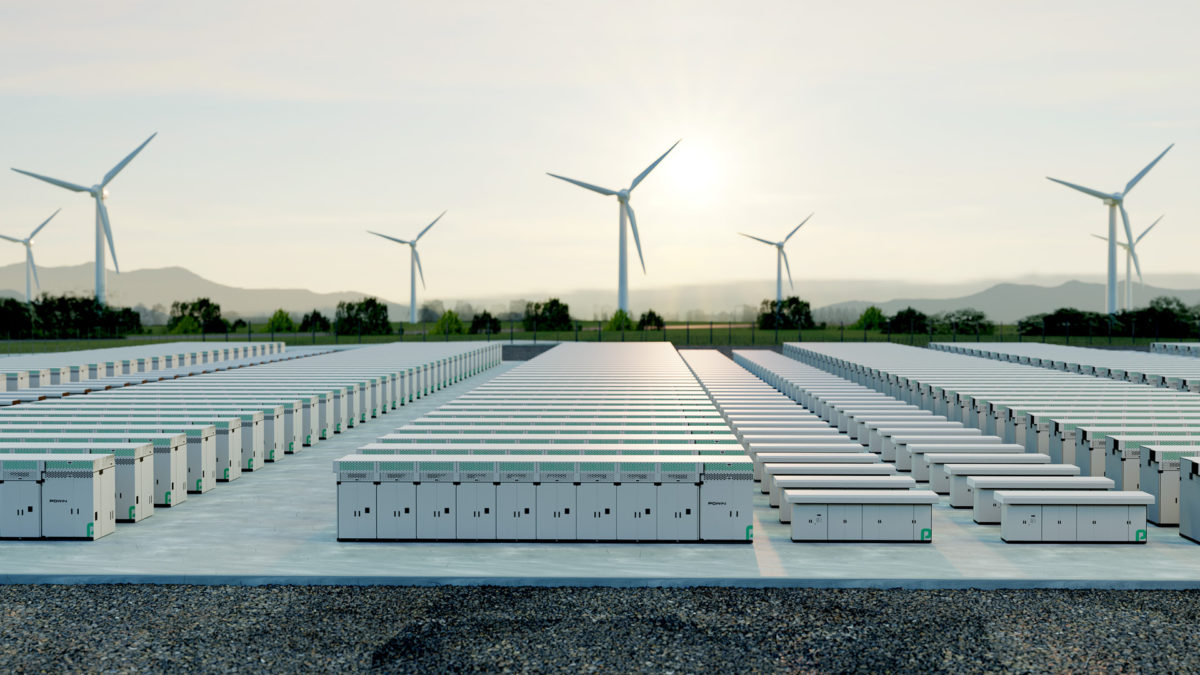Pacific Northwest National Laboratory (PNNL) researchers have investigated how energy storage used as a transmission asset could also be operated and compensated as a market participant, primarily in energy markets.
As an example of storage used as transmission, Jeremy Twitchell, a senior energy analyst at PNNL, said on a webinar that Midwest grid operator MISO selected a $12 million storage project as a transmission asset in Wisconsin, instead of a $13 million transmission project. MISO’s storage-as-transmission project will recover its cost through MISO’s transmission system rates, approved by the Federal Energy Regulatory Commission (FERC), he said, and will not participate in energy markets.
The opportunity for dual use of such a project arises because “even on fully contracted, heavily used transmission lines, there is unused capacity most of the time,” Twitchell said. “This makes sense,” he added, because “we build the grid based on peak needs plus reserve margins, but we’re only at that peak a few hours a year.”
That means storage, when it’s not being used as transmission, “can go do other things,” he said.
FERC “recognized this in 2017,” Twitchell said, and issued a policy statement saying that storage deployed as a transmission asset can also provide market services. “FERC was doing this to reduce system costs,” he said, adding that FERC cautioned that a storage asset cannot recover all its costs as a transmission asset, and also recover all its costs as a generation asset, “and keep it all,” because in that case there’s no cost reduction.
Both California grid operator CAISO and MISO began exploring how to respond to FERC’s nonbinding policy statement, Twitchell said, with CAISO considering how market revenues could be shared with customers, but both closed their proceedings without resolving the complexities of market participation and compensation for dual-use storage.
Without clear compensation mechanisms to enable developers to recover the costs of energy storage investments, the investments “will not go forward,” said Charlie Vartanian, a senior technical advisor at PNNL who moderated the webinar.
So Twitchell and fellow researchers at PNNL developed a framework for compensating dual-use storage in a way that meets FERC’s goal of reducing both system and customer costs. “Our hope,” he said, “is that a grid region and its utilities and stakeholders get together and say, ‘Hey, we want to do this, here’s this resource that helps us figure this out. And we’re going to do it in a way that makes sense in our region.'”
The researchers presented their framework in a paper published in February. In March, MISO opened a new proceeding to consider dual-use storage, Twitchell said, while New York grid operator NYISO is putting the idea on its study agenda for future consideration.
PNNL’s proposal
The PNNL researchers said that to overcome the barriers between regulated transmission operations and competitive market operations, a dual-use participation process must answer “three basic questions.” The first two questions are when will the asset participate in the market and how will it participate. The third question is what costs will be recovered from regulated transmission rates, and what costs will be recovered from market operations.
A key principle, they said, is that a dual-use asset’s market participation “must not jeopardize” its ability to serve the transmission function for which it was initially selected.
The researchers identified three key elements of a dual-use participation model, and the “points of flexibility” for grid operators and stakeholders to adapt the model.
One element of the framework is to establish in advance the windows for market participation by dual-use storage, for example at least a day ahead, based on projected transmission needs, and to manage the device’s state of charge to maintain sufficient capacity to meet the transmission need at any time.
Another framework element is to balance cost recovery mechanisms between regulated transmission compensation and competitive market compensation, to incentivize market participation.
The PNNL webinar is the latest in a series of PNNL webinars on storage.
The PNNL team’s paper separately maintains that current practices “create barriers against the identification of energy storage in the transmission planning process,” and identifies “best practices” for including energy storage in the planning process. The paper is titled “Enabling principles for dual participation by energy storage as a transmission and market asset.”
This content is protected by copyright and may not be reused. If you want to cooperate with us and would like to reuse some of our content, please contact: editors@pv-magazine.com.








By submitting this form you agree to pv magazine using your data for the purposes of publishing your comment.
Your personal data will only be disclosed or otherwise transmitted to third parties for the purposes of spam filtering or if this is necessary for technical maintenance of the website. Any other transfer to third parties will not take place unless this is justified on the basis of applicable data protection regulations or if pv magazine is legally obliged to do so.
You may revoke this consent at any time with effect for the future, in which case your personal data will be deleted immediately. Otherwise, your data will be deleted if pv magazine has processed your request or the purpose of data storage is fulfilled.
Further information on data privacy can be found in our Data Protection Policy.